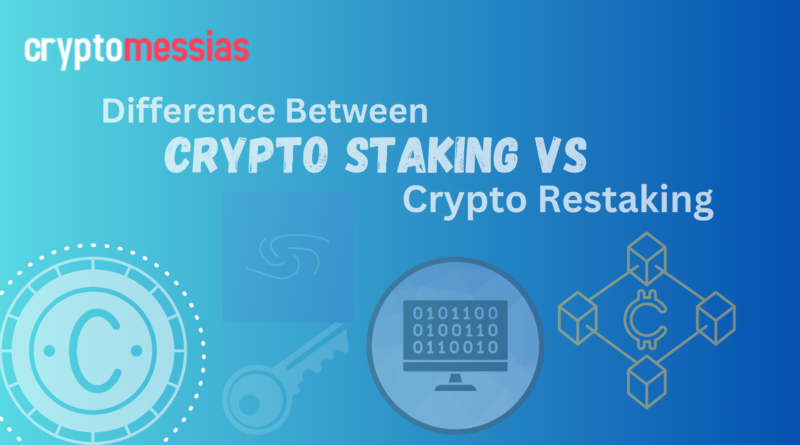Understanding the Distinction: Crypto Staking vs. Crypto Restaking
In the ever-evolving world of cryptocurrencies, new concepts and technologies continue to emerge, captivating the attention of investors and enthusiasts alike. Among these innovative trends, crypto staking and restaking have gained significant traction. While they may sound similar, it is crucial to understand the distinctions between the two. In this blog, we will delve into the intricacies of both crypto staking and crypto restaking, shedding light on their unique characteristics and benefits.
The Basics of Crypto Staking:
Crypto staking, also known as proof-of-stake (PoS), is a process that allows cryptocurrency holders to participate in network consensus and secure the blockchain by locking up their coins. By doing so, stakers gain the opportunity to validate transactions and create new blocks, typically earning rewards in the form of additional coins.
One of the core advantages of crypto staking is that it requires significantly less energy consumption compared to traditional proof-of-work (PoW) protocols, such as Bitcoin mining. Staking provides a more sustainable and environmentally friendly alternative, making it an attractive option for those concerned about the ecological impact of cryptocurrencies.
Furthermore, crypto staking promotes network decentralization by incentivizing participants to hold and support the underlying blockchain. This helps ensure a robust and secure network, reducing the risk of potential attacks.
Understanding Crypto Restaking:
On the other hand, crypto restaking is a process that allows stakers to maximize their potential rewards by compounding their earnings. Instead of withdrawing their staked coins and collecting rewards periodically, restakers keep their initial stake intact and automatically reinvest the earned rewards back into the staking pool.
By restaking their earnings, participants can benefit from the compounding effect, leading to exponential growth in their staked holdings over time. This approach is particularly advantageous for long-term investors who aim to maximize their returns and strengthen their position within the network.
Distinguishing Features:
While crypto staking and crypto restaking share a common objective of earning rewards through participation in network consensus, there are notable distinctions between the two.
1. Liquidity and Accessibility:
Crypto staking typically requires a lock-up period, during which stakers cannot access or transfer their coins. This time-based commitment ensures the security and stability of the network. In contrast, crypto restaking allows for greater flexibility and liquidity, as participants can compound their earnings without sacrificing immediate accessibility to their staked assets.
2. Risk and Reward:
Staking, in general, carries a certain level of risk, as the value of the staked assets may fluctuate. However, by opting for restaking, participants can potentially mitigate some of these risks by compounding their rewards, thereby increasing their stake’s value over time. Restaking allows investors to take advantage of the inherent volatility of cryptocurrencies and optimize their potential returns.
3. Complexity and Technical Knowledge:
While both staking and restaking require a basic understanding of the underlying blockchain technology, restaking may involve additional steps and technical knowledge. Restakers must navigate the intricacies of automatic reinvestment tools or platforms, ensuring a seamless process for compounding their earnings. Therefore, participants must familiarize themselves with the specific requirements of the restaking mechanism they choose to utilize.
Conclusion:
In the dynamic world of cryptocurrencies, the concepts of staking and restaking offer unique opportunities for investors to earn rewards while contributing to network security and decentralization. While crypto staking provides a solid foundation for participation, crypto restaking takes it a step further by compounding earnings and optimizing returns.
Understanding the distinctions between these two processes is vital for investors, as it allows them to make informed decisions based on their risk tolerance, liquidity needs, and long-term investment goals. By harnessing the power of staking and restaking, individuals can actively participate in the growth and development of the crypto ecosystem while potentially reaping the benefits of their investments.

